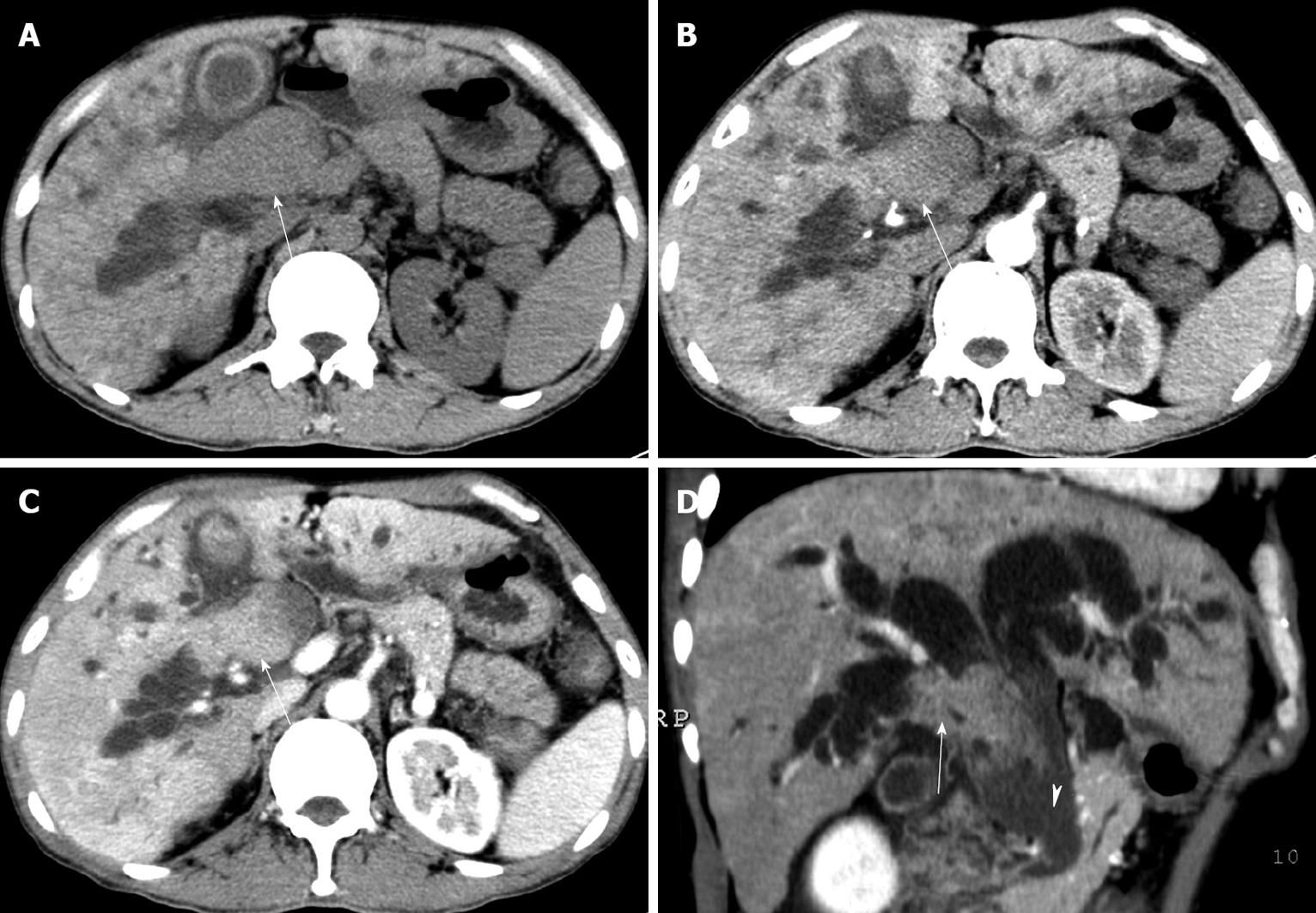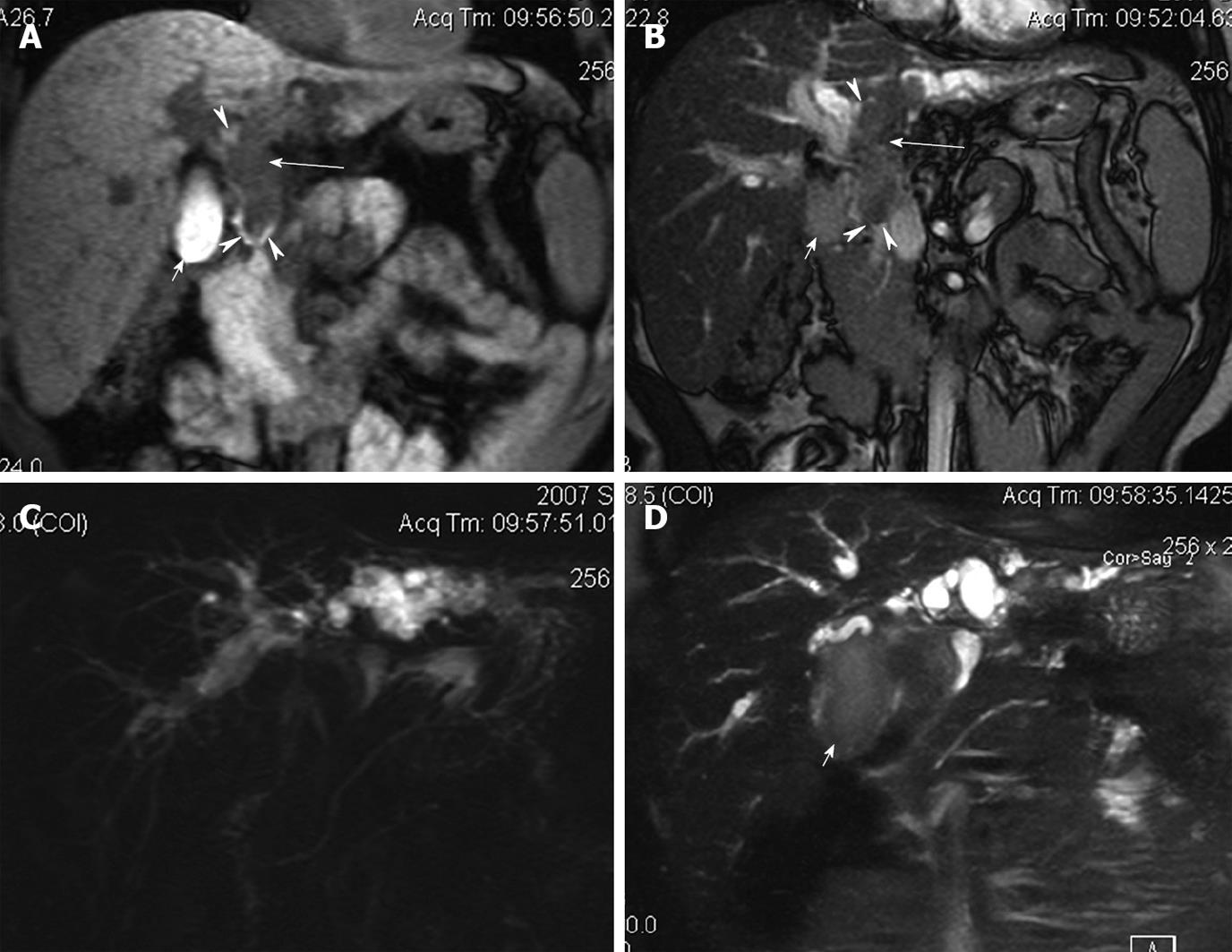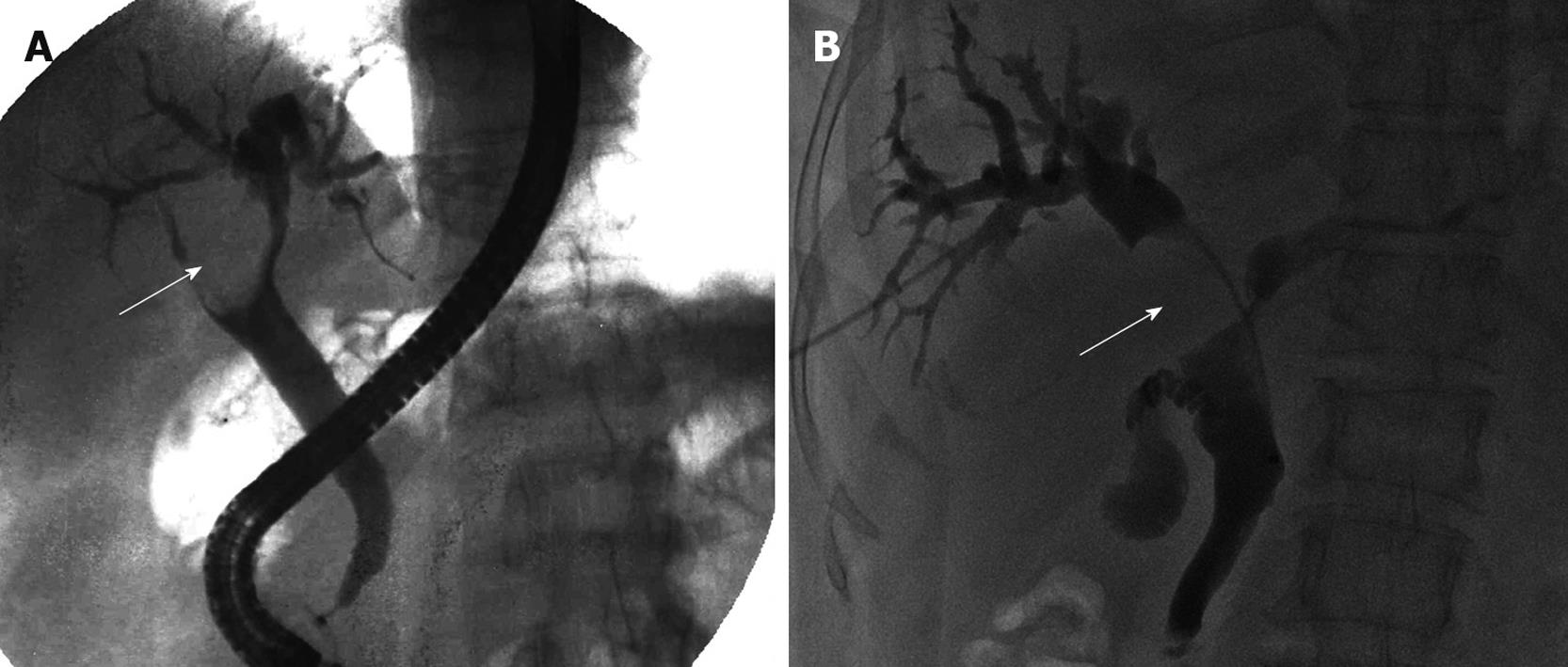Copyright
copy;2010 Baishideng Publishing Group Co.
World J Gastroenterol. Oct 21, 2010; 16(39): 4998-5004
Published online Oct 21, 2010. doi: 10.3748/wjg.v16.i39.4998
Published online Oct 21, 2010. doi: 10.3748/wjg.v16.i39.4998
Figure 1 Axial computed tomography images of case 1 at plain scan (A), early arterial phase (B), portal phase (C), and coronal oblique plane reformation image at portal phase (D) showing irregular tumor thrombi in right hepatic, common hepatic and common bile ducts (arrows).
The tumor thrombus was mild hypo-intense on plain scan with enhancement in early arterial phase. Neither portal vein thrombus nor hepatic parenchymal mass was identified. Heterogeneously attenuated liver with lacelike fibrosis and regenerative nodules due to cirrhosis could be observed. The common bile duct was filled with hemorrhage and debris (arrowhead), which was not enhanced and mild hyper-dense in the bile.
Figure 2 Magnetic resonance and magnetic resonance cholangiopancreatography images of Case 2.
A: Coronal T1 weighted image showing hypo-intense tumor thrombus (large arrows) in left hepatic, common hepatic and common bile ducts; B: Coronal T2 weighted image showing the tumor thrombus as iso- to slight hyper-intense; C: Thick slice magnetic resonance cholangiopancreatography image showing bilateral dilated intrahepatic ducts with “vanished” common hepatic and common bile ducts; D: Thin slice magnetic resonance cholangiopancreatography image showing filling defect in the hilar. Neither portal vein thrombus nor hepatic parenchymal mass is identified. The signal intensity of liver is heterogeneous due to cirrhosis. Blood clots or hemorrhage can be observed in gallbladder (small arrows), common hepatic and common bile ducts (arrowheads), which are hyper-dense on T1 weighted image, and slight hyper-intense on T2 weighted image.
Figure 3 Endoscopic retrograde cholangiopancreatography image of case 3 (A) and percutaneous transhepatic cholangiography image of case 4 (B) showing tumor thrombus (arrows) in right hepatic duct and common hepatic duct as a smooth oval filling defect on endoscopic retrograde cholangiopancreatography image and a smooth oval filling defect on percutaneous transhepatic cholangiography image, respectively.
- Citation: Long XY, Li YX, Wu W, Li L, Cao J. Diagnosis of bile duct hepatocellular carcinoma thrombus without obvious intrahepatic mass. World J Gastroenterol 2010; 16(39): 4998-5004
- URL: https://www.wjgnet.com/1007-9327/full/v16/i39/4998.htm
- DOI: https://dx.doi.org/10.3748/wjg.v16.i39.4998











